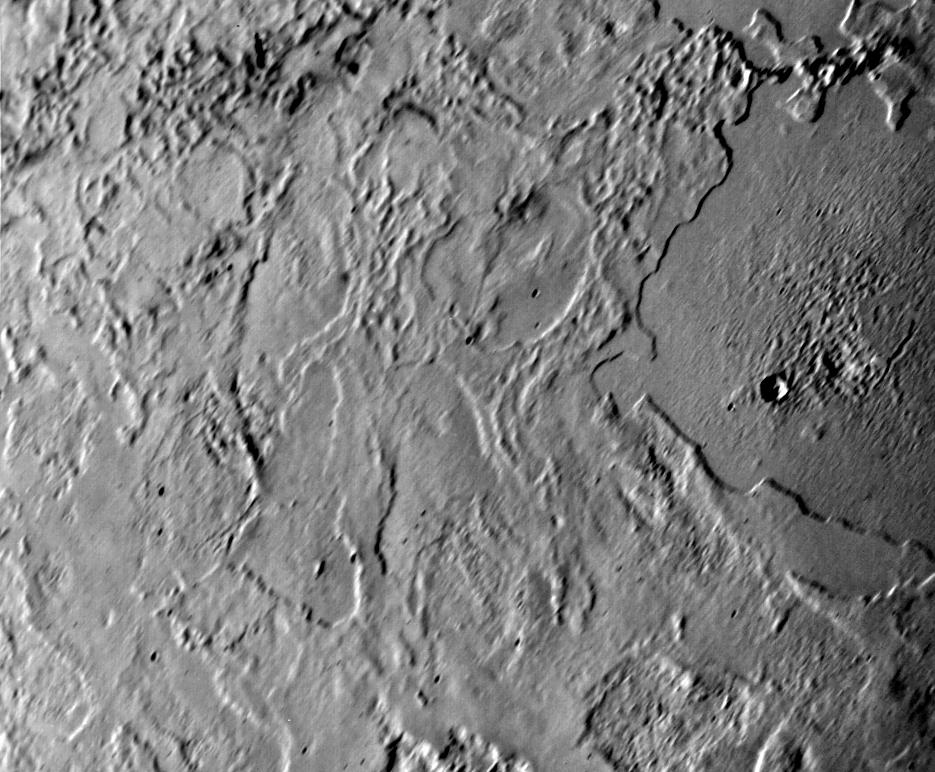Triton

| Credit | NASA/JPL |
|---|---|
| PIA Number | PIA02208 |
| Language |
|
Voyager 2 took this picture of Neptune's largest satellite,Triton, from less than 80,000 km (50,000 miles). The image shows an area in Triton's northern hemisphere. The Sun is just above the horizon, so features cast shadows that accentuate height differences. The large, smooth area in the right-hand side of the image shows a single, fresh, impact crater. Otherwise there is no evidence of impacts such as those that have pocked the faces of most of the satellites Voyager 2 has visited. Many low cliffs in the area, bright where they face the Sun, and when they face away from it, suggest and intricate history for Triton. The cliffs might be due either to melting of surface materials or, possibly, caused by unusual fluid materials that flowed sometime in Triton's past. The Voyager Mission is conducted by JPL for NASA's Office of Space Science and Applications.
